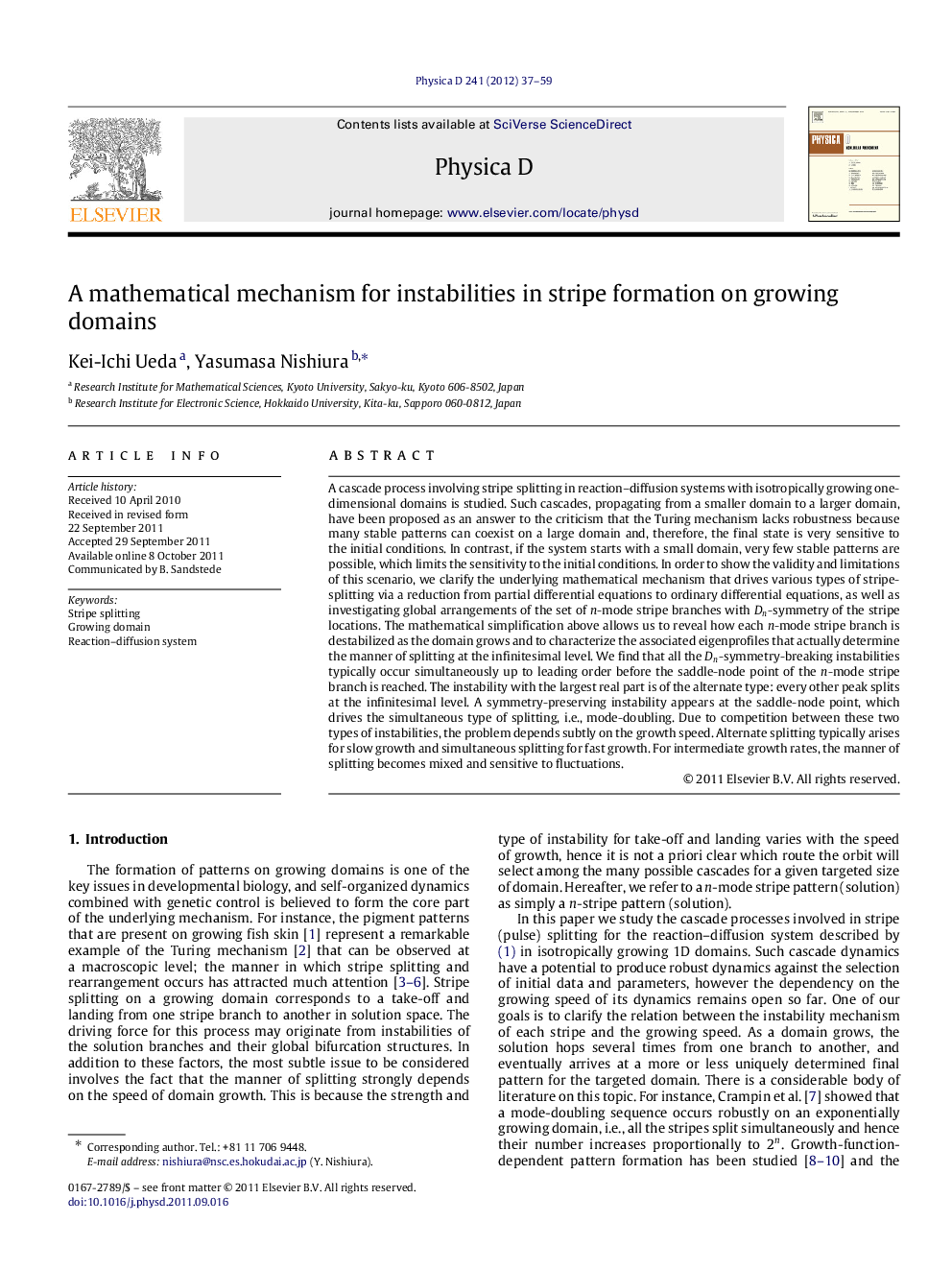| Article ID | Journal | Published Year | Pages | File Type |
|---|---|---|---|---|
| 1897671 | Physica D: Nonlinear Phenomena | 2012 | 23 Pages |
A cascade process involving stripe splitting in reaction–diffusion systems with isotropically growing one-dimensional domains is studied. Such cascades, propagating from a smaller domain to a larger domain, have been proposed as an answer to the criticism that the Turing mechanism lacks robustness because many stable patterns can coexist on a large domain and, therefore, the final state is very sensitive to the initial conditions. In contrast, if the system starts with a small domain, very few stable patterns are possible, which limits the sensitivity to the initial conditions. In order to show the validity and limitations of this scenario, we clarify the underlying mathematical mechanism that drives various types of stripe-splitting via a reduction from partial differential equations to ordinary differential equations, as well as investigating global arrangements of the set of nn-mode stripe branches with DnDn-symmetry of the stripe locations. The mathematical simplification above allows us to reveal how each nn-mode stripe branch is destabilized as the domain grows and to characterize the associated eigenprofiles that actually determine the manner of splitting at the infinitesimal level. We find that all the DnDn-symmetry-breaking instabilities typically occur simultaneously up to leading order before the saddle-node point of the nn-mode stripe branch is reached. The instability with the largest real part is of the alternate type: every other peak splits at the infinitesimal level. A symmetry-preserving instability appears at the saddle-node point, which drives the simultaneous type of splitting, i.e., mode-doubling. Due to competition between these two types of instabilities, the problem depends subtly on the growth speed. Alternate splitting typically arises for slow growth and simultaneous splitting for fast growth. For intermediate growth rates, the manner of splitting becomes mixed and sensitive to fluctuations.
► We study a stripe splitting process on growing domains. ► Splitting process changes qualitatively depending on the growth speed. ► Simultaneous splitting for exponential growth and alternative one for slow growth. ► Behavior of eigenvalues along the stripe characterizes the manner of instabilities. ► A reduced system of ODEs enables us to show the dynamics of splitting analytically.
